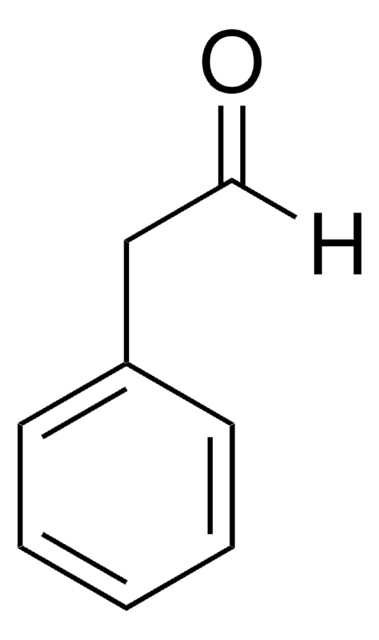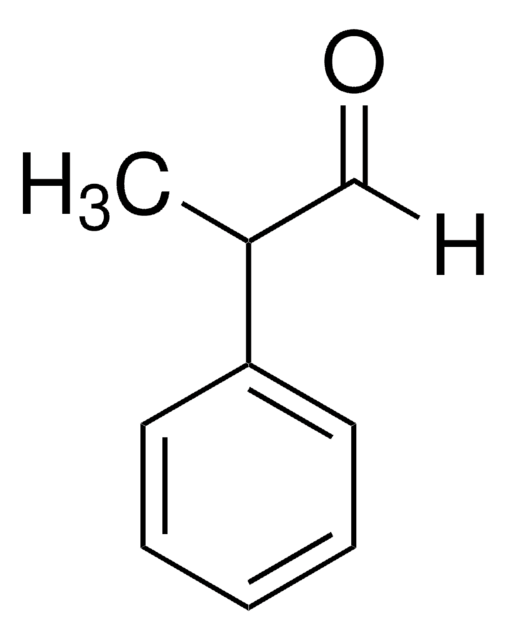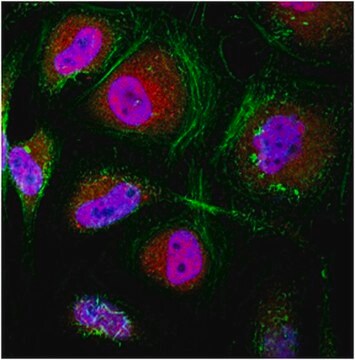107395
Phenylacetaldehyde
≥90%
Sinónimos:
α-Tolyaldehyde
About This Item
Productos recomendados
Nivel de calidad
Ensayo
≥90%
índice de refracción
n20/D 1.535 (lit.)
bp
195 °C
mp
−10 °C (lit.)
solubilidad
H2O: slightly soluble
alcohol: soluble
diethyl ether: soluble
densidad
1.027 g/mL at 25 °C
grupo funcional
aldehyde
phenyl
temp. de almacenamiento
2-8°C
cadena SMILES
O=CCc1ccccc1
InChI
1S/C8H8O/c9-7-6-8-4-2-1-3-5-8/h1-5,7H,6H2
Clave InChI
DTUQWGWMVIHBKE-UHFFFAOYSA-N
¿Está buscando productos similares? Visita Guía de comparación de productos
Categorías relacionadas
Aplicación
Acciones bioquímicas o fisiológicas
Otras notas
Palabra de señalización
Danger
Frases de peligro
Consejos de prudencia
Clasificaciones de peligro
Acute Tox. 4 Oral - Aquatic Chronic 3 - Eye Dam. 1 - Skin Corr. 1B - Skin Sens. 1A
Código de clase de almacenamiento
8A - Combustible corrosive hazardous materials
Clase de riesgo para el agua (WGK)
WGK 1
Punto de inflamabilidad (°F)
154.4 °F - (External MSDS)
Punto de inflamabilidad (°C)
68 °C - (External MSDS)
Equipo de protección personal
Eyeshields, Faceshields, Gloves, type ABEK (EN14387) respirator filter
Elija entre una de las versiones más recientes:
¿Ya tiene este producto?
Encuentre la documentación para los productos que ha comprado recientemente en la Biblioteca de documentos.
Nuestro equipo de científicos tiene experiencia en todas las áreas de investigación: Ciencias de la vida, Ciencia de los materiales, Síntesis química, Cromatografía, Analítica y muchas otras.
Póngase en contacto con el Servicio técnico









